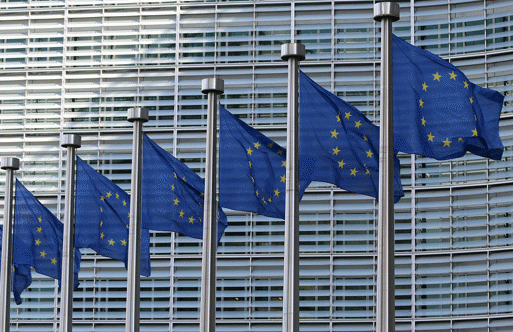Demos is a cross-party research organisation and it has brought its investigative skills to bear on social media. The work led, ultimately, to the creation of Demos' Centre For Analysis Of Social Media (CASM) - a partnership with University of Sussex.
From CASM came Method 52, a piece of machine-learning software that brings social media analytics and social research in-line with academic standards - rigorous standards that government is willing to listen to. And to help politicians understand its research, Demos has worked with BCS to create an innovative and visual dashboard system.
'Around five years ago we watched the rise of social media and we thought this would be a potentially useful tool through which we can understand some of the issues that we're already dealing with,' said Demo's Krasodomski-Jones, recalling the decisions that led ultimately to Method 52's creation.
The idea seemed logical and the necessary tools appeared to already exist. 'Coke was interested in how many times you click on its site. Nike was interested in sentiment about its shoes online,' he recalled.
Demos explored these internet marketing insights and the tools that were used to create them. But, when it spoke to politicians, they said: 'It's great. It's modern. It's up-to-date. It's shiny. But I can't use this stuff. We're not interested in the same insights Nike is interested in. We don't know how accurate this data is and we don't know who is represented. We don't know who is speaking and we don't know what's going on inside the technology.'
Researcher and machine in unison
Five years in the making, CASM's Method 52 is a human assisted machine learning platform. It works hand-in-hand with researchers and can be used to aid political insight through looking for patterns in huge data sets of Tweets. These sets, Krasodomski-Jones, explained can consist millions of tweets - so large they are impossible for a human to grapple with alone.
With the data set captured, Method 52 needs to be 'taught' by the researcher. This process begins with the human taking a smaller set of data - maybe 100 tweets - and hand marking each as, say, either positive or negative.
These provide the machine with a probabilistic framework. It can then use this as a prism through which to view the larger pool of tweets and, ultimately, frame the answer to the question being researched.
A focus on Twitter
For the purpose of dealing with UK politics, Demos looks primarily at Twitter. This, of course, leads to a natural question: is Demos looking at a representative cross-section of society? Twitter is, after all, much loved by the London media set, politicians and opinion makers. Could looking at the micro blogging site lead to some kind of bias?
'Twitter is unrepresentative,' says Krasodomski-Jones, going on to explain that only around six per cent of the UK's population uses Twitter. '[We focus on it] because a lot of politicians are on Twitter and a lot of political debate takes place on Twitter. And also Twitter is very open with the types of data it provides to developers like us.'
'By focusing on Twitter, Demos is', Krasodomski-Jones explained, 'gathering data right from where critical political debate happens. As a story breaks, politicians, journalists and interest groups of all stripes debate the story. And these sometimes spontaneous debates can contain insights which the traditional media or polling data might otherwise miss.'
This also runs directly opposite to how debate tends to happen on Facebook. There, Krasodomski-Jones says, discussions happen in silos. 'Somebody who was debating on a Labour page won't take time to go on to a Conservative or an SNP page and to try and argue with people there. They'll be shouted down.' Facebook is then a more siloed debating space.
Refining the tool
Despite being very rigorous in its approach to analysing and understanding trends on social media, there was still work to be done. Working with BCS, Demos developed a dashboard tool that makes Method 52's findings easier to understand. Politicians, Alex Krasodomski-Jones explained, can be notoriously time poor.
'The work we did with BCS looks at how we can plot that data so a non-computer scientist can quickly make sense of the information,' he says. 'If you see a pie chart, it suddenly makes sense - if it's split between, say, abusive and non-abusive messages you can very quickly make sense of a proportion.'
Looking into the future
Demo's Method 52 was deployed in the run up to the Brexit referendum and also during the 2015 general election. During the run up to the election, Demos looked - for example - to understand whether voters were positive or negative about their politicians.
'Were people discussing personality or politics?' asked Alex Krasodomski-Jones, listing some of the points that were researched. 'Are they saying David Cameron's position on the NHS is good. Or are they saying Nigel Farage is sweating a lot and he looks like x or y?'
These might seem like very basic questions but, Alex Krasodomski-Jones explained, researching them did produce some striking insights. 'We found that the more established a party is... the more established a politician is, the more likely people are to focus on the party's issues.' The seriousness of the debate around an issue also increased if the politician is male, he revealed.
Conversely, he says, if the politician is female - or from a fringe party or representing a very specific interest group - Twitter users would focus more on their personality.
Social media users were, in short, - more likely to discuss what the politician was wearing, what they looked like and their tone of their voice.
Breaking into an echo chamber
Through making it easier to communicate, social media was meant to bring its users closer together. When it comes to politics and political debate however, Facebook and all its friends may be having the opposite effect.
These algorithmically driven platforms understand users' preferences and recommend new friends, links and content that align with our preferences. Research from the cross-party think-tank Demos reveals that political news, opinion and information are being treated in just the same way.
Programmed to meet users' likes, online Labour voters receive Labour-centric news and Conservative voters receive Conservative leaning information.
More importantly, as the social media platforms strive to keep their users happy, their algorithms may even actively avoid providing users with views from political camps different from their own.
This echo-chamber effect leads to what Demo's Alex Krasodomski-Jones describes as 'thought bubbles' - and they could be making it harder for users to make political decisions based on both sides of an argument.
Indeed, the thought bubble phenomenon could, in part, have been responsible for the shock some people felt when the European referendum's results were announced. People who favoured remaining would, via social media, have received news, opinion and information that was pro-remain. It was functionally very difficult to see, hear or read about the opposing view. Being enveloped by feeds of palatable news, people drew the erroneous conclusion that remain would win.
By understanding, measuring and mapping these thought bubbles, Krasodomski-Jones says Demos hopes to be able to help widen the political debate and help voters make informed choices.

















